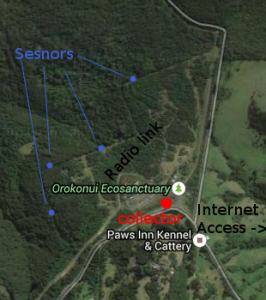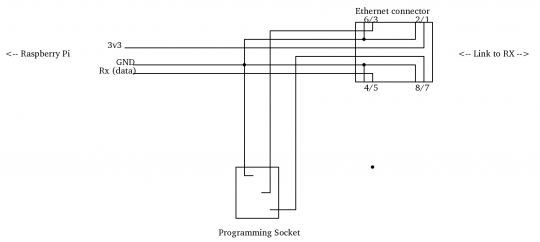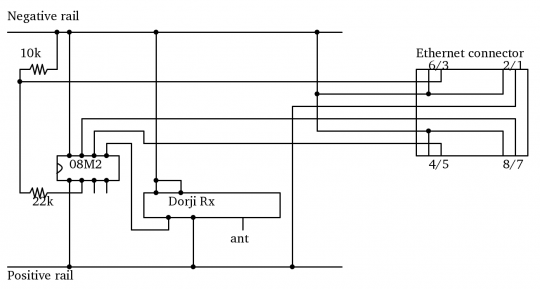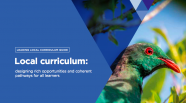Top scholar DDDO: A monitoring system for the Orokonui Ecosanctuary
Orokonui Ecosanctuary on the Otago Peninsula includes a creche for Haast tokoeka kiwi chicks. These are the rarest of kiwi chicks and only a very small percentage make it to adulthood in the wild. The chicks are hatched in the wild and then brought to the creche until they have reached 1.2kg and can protect themselves against stoats in the wild.
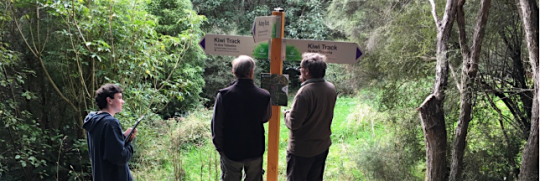
The area that the chicks are housed in is fenced and has gates that visitors use to enter the 14-hectare creche. The chicks need to be kept separate from the adults as the adults will pick on the younger kiwi. There are four gates in the sanctuary. Visitors leaving gates open can be catastrophic for these precious birds.
Developing a monitoring system to alert volunteers that a gate had been left open was a need identified by Tony Stewart – one of the volunteers. Tony could also see that long-term monitoring of multiple aspects of the sanctuary environment could also be possible.
This real need turned into a very successful scholarship project for William Satterthwaite – top scholar in technology.
Digital Technology Scholarship 2016: Orokonui Monitoring (PDF, 4 MB)
Getting started
Coming up with a project that will give students access to a technology scholarship can be challenging. In this instance, Julie McMahon, William’s digital technologies teacher, brought this project to his attention.
Andrew Hornblow from Skills had run a workshop in Dunedin on The Internet of Things (IOT) The IOT is the networking of devices to the internet to enable the collection of data.
The IOT is trending in the world of digital technologies and has excited many industry experts and consumers with its possibilities. Using the IOT for networking electronic sensors, within an eco-setting, added the element of originality to this submission -one of the requirements of an outstanding scholarship submission.
Tony attended this workshop and discussed the need for gate monitoring with Andrew. Julie introduced William to Andrew as an industry mentor and discussions began on a technology scholarship project with a focus on monitoring systems for the sanctuary. Tony also acted as a stakeholder and assisted William throughout the project with gaining feedback from the team of volunteers.
Access to all three technology learning area strands
This authentic, local community problem, with diverse aspects gave William Satterthwaite the opportunity to research in depth multiple angles for a proposed solution. Through this he was able to demonstrate an understanding of all three strands of the technology learning area (a requirement of scholarship technology).
Developing the solution involved substantive technological modelling of ideas, research and understanding of technological systems. At level 8 of the technology learning area students are expected to be able to understand operational parameters and their role in the design, development, and maintenance of technological systems (Achievement objective, level 8, technological systems).
This project demanded a high level of understanding of the boundaries and/or conditions within which the monitoring system was designed to function within as well as the influence of factors associated with the technical feasibility and social acceptability of the system.
Technological products knowledge was also required as the materials used had to withstand being located in an outdoor setting.
The nature of technology within this context included such things an in depth exploration of the socio-cultural needs of the stakeholders. Some examples of the questions William explored as part of his system development included:
- What devices and representations of alerts would suit the volunteers?
- What was the best way to develop a system that would suit a socio-cultural context of a volunteer organisation with limited funding?
- How could the system be set up in a way that others could continue to maintain and develop it further in the future without incurring major costs?
Technological practice is inherent within this project. The brief and specifications were developed and refined along the way. William acknowledged his project management approach, with on-going interaction with stakeholders and testing, aligned more closely with the agile than the waterfall approach to project management.
Here is a youtube clip of an early radio transmission.
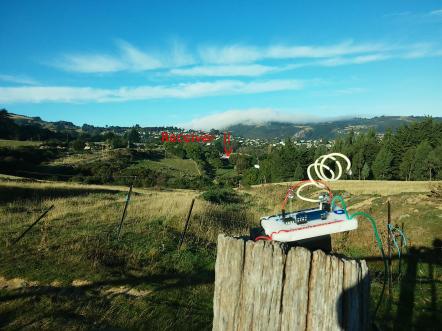
Trialling and testing the system functionality within different boundaries
Complex technical considerations
Some of the many technical considerations William considered when developing the monitoring system included:
- the best dynamic graphing system to use to depict the data
- deciding on a server that could store and process data,was stable, that William was familiar with, and had minimal cost
- using a language system to display the data as customiseable graphs that would suit users and was future-proofed
- protecting personal user data
- integrating data so that the system would send out tweets, sms and or emails
- ensuring all major browsers would give an acceptable response time for a user within an acceptable network speed and hardware setup
- developing standardised systems so that additional modules could be built in the future for other sensors in other places in the sanctuary. For example sound (recording bird calls), trap status (sensors in traps to see if traps have closed), and cameras on the waterways to show if stoats are getting through the gates
- determining radio transmitter systems and frequencies that would ensure reliable data transport and showed respect for others who maybe using the same transmitting frequency
- managing power supply to the sensors
- security of the sensor data to prevent false readings and/or injecting false data to interrupt the real database
It is obvious from this list the project was rich in sophisticated integration and abstraction -a criteria of an outstanding technology scholarship award.
Fitness for purpose in its broadest sense
This concept refers to the "fitness" of the outcome itself as well as the practices used to develop the outcome. Demonstrating an understanding of this concept is a requirement of a successful scholarship submission.
William is a great advocate of open source software. (OSS)
Open-source software (OSS) is computer software with its source code made available with a license in which the copyright holder provides the rights to study, change, and distribute the software to anyone and for any purpose. Open-source software may be developed in a collaborative public manner.
Wikipedia
When a technological outcome is created with fitness for purpose in its broadest sense in mind on-going maintenance requirements are addressed as part of the design. The open source nature and the extensive documentation on how the system worked meant that others could easily continue developing the system and ensured sustainability of resources.
The modular nature of this system also meant that upgrades could be installed and malfunctions could be corrected without disrupting the whole system and keeping on-going maintenance simple.
Ethical testing was apparent as the system was tested in situ and with the volunteers from the sanctuary.
The modular approach ensured optimisation of the prototype. The gate monitoring system was just the beginning. Modules for monitoring other environmental conditions could easily be added to further optimise the system.
Communication
A technology scholarship report is required to provide convincing communication of the project. William wrote a report that clearly showed the depth of technical expertise required as well as the multiple decisions he made that took into account the nature of the context within which he developed his outcome.
Thomas gained 24 points out of a possible 24 for his scholarship submission.
Other resources
- Otago Daily Times: Pupils project aiding ecosanctuary
You might also like ...
Leading Local Curriculum Guide series
This guide series has been developed to deliberately steer your curriculum and assessment review and design decisions as you strengthen your local curriculum.


